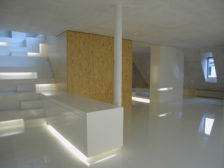Articles by Diana Lind
Glacier Loft
In Lucerne, Switzerland, Gus Wustemann forms the crystalline Glacier loft, turning a dark attic luminous.
Read More
Copyright ©2024. All Rights Reserved BNP Media.
Design, CMS, Hosting & Web Development :: ePublishing
